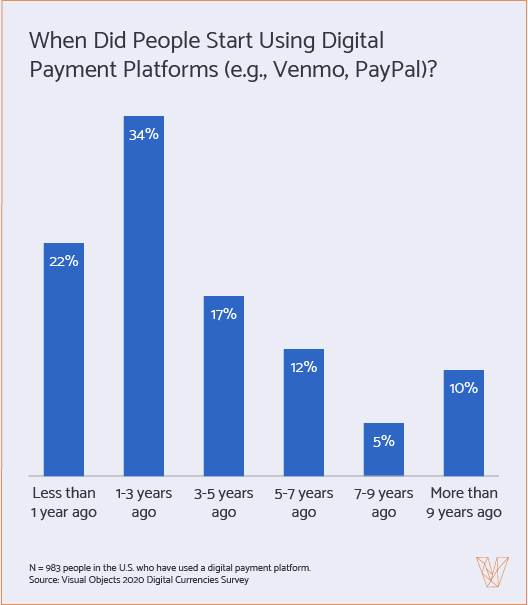Welcome to Thomas Insights — every day, we publish the latest news and analysis to keep our readers up to date on what’s happening in industry. Sign up here to get the day’s top stories delivered straight to your inbox.

The bandwidth of the supply chain is spread thin as the COVID-19 pandemic continues. Less is being manufactured, but more people are aiming to stock up on supplies and essential items.
Many industries are feeling the negative economic effects of this public health pandemic. According to a New York Times report, 16 million people have become jobless between late March and early April 2020. There’s no doubt that COVID-19 is affecting supply chain companies across industries.
While your company may not have direct control over other points within your supply chain, you can still find opportunities to establish control over your space in the supply chain. Your proactivity will inspire greater efficiency downstream.
Here are a few ways supply chain companies can amend their operations to accommodate emerging challenges within the industry.
Consider Integrating Digital Payment Methods
The connection between B2B services providers and their clients requires efficiency and trust. In these uncertain times, this connection can be solidified by giving clients the option to utilize digital payment methods in place of traditional, tangible currency.
Worries about spreading the virus through the exchange of paper currency are circulating as central banks around the world endorse a keener focus on digital payment options. As this sentiment grows, more companies are inclined to pay for goods and services in ways that don’t require a physical exchange of currency. This is where electronic payment methods can serve as business solutions.
Data from March 2020 indicates that most individuals have been using digital payment platforms for less than 5 years, and data from May 2020 indicates that about 1 out of 5 small businesses currently do not have a contactless option for payment. However, the convenience and efficiency of the platforms paired with increased concerns surrounding COVID-19 make digital currencies more viable now than ever.

Source: Visual Objects
The Future of Supply Chains: Why Companies Are Digitizing Payments 2018 report discusses the opaque nature of using cash or checks as a primary way of dealing with clients. As a supply chain company, your payment processes should be as trackable and transparent as possible.
Furthermore, the report points out that cash payments can also be inefficient. To truly reap the benefits of digitalized payments, many supply chain companies across the country will need to adopt digital payment methods.
Now is an opportune time for B2B supply chain companies to follow the lead of B2C vendors. In the B2C world, cashless payments have spiked due to the pandemic. This step forward has rewarded B2C businesses with better cash and business management capabilities.
What’s more is supply chain companies will be better positioned to develop loyal, reliable relationships with suppliers and distributors through a transparent, straightforward digital payment system.
For now, businesses can make a big impact relatively easily by adding digital payment options to their current operations.
Address Difficulties with a Clear Message
It may seem simple, but one of the most direct ways to handle your supply chain struggles is to address disruptions with a clear message.
While it may seem counterintuitive to share internal weaknesses with a large audience, your clients will appreciate your empathic, honest message. Leaders across the country have been declaring that “we’re all in this together,” and that should ring true in your communications as well.
Several manufacturing companies leveraged digital messaging to discuss the challenges they faced at the start of the pandemic. Addressing difficulties upfront helps clients align with supply chain companies and dispels potential concerns.
For instance, Toyota presented a message from Japan’s four largest automobile manufacturers associations in response to the global pandemic in April. Their message was delivered clearly on the Toyota global news site, stating the following about manufacturing during COVID:
- The manufacturers planned to shift resources to self-sufficiently produce masks, healthcare equipment.
- Manufacturers face a challenging economy that has a ripple effect on the auto industry.
- Companies are making a renewed effort to match employees with skills and positions.
- Their continued effort to provide top services while providing aid to healthcare companies.
This video discussion was intended to disprove any doubts about the manufacturing industry to weather COVID-19 and contribute to solving pandemic-related issues. It assures other supply chain companies of their position during the start of COVID-19.
The ability to tie their response closely to their company mission helps foster the continued confidence of customers. While this message came early in the pandemic and without a specific course of action, it still assures consumers that the business is taking the issue seriously.
In addition to communicating messaging via the press, companies have also taken to sharing their positioning, challenges, and stories with their clients over email and social media.
When applying transparent messaging to your own company, you should utilize this clear, mission-driven messaging to address potential challenges with clients. These messages can address:
- Backorders
- Supply chain disruptions
- Plans for precautionary measures
- Your company’s general response to the issue.
Taking these actions will help clients manage their expectations and relationship with your company. Demonstrating your plans to overcome difficulties is essential to retaining their business. Your transparency will be appreciated.
Whether it’s through email or social media, a clear, articulate message will keep your customers and company on the same page throughout difficult times.
Recognize Internal Efforts and Loyalty
While experiencing challenges with your supply chain, it’s very important to recognize the efforts made by employees and executives that continue to stand with you.
On the client end of the issue, it’s easy to buy into alternative services if their providers aren’t able to extend the level of service they’ve come to expect. This is why it’s important to create a strong internal foundation, unifying employees together.
If your team feels that they’re weathering the pandemic as a unit, morale and commitment to the company will increase. Making your employees feel valued during difficult times is essential to maintaining a happy, strong team.
Employee recognition can come in many forms. When selecting what to offer, think through what your employees value. Brainstorming on this topic will lead you to the most impactful, sensible conclusions.
In some cases, executives are able to recognize challenges and loyalty by taking a humbling action themselves. For instance, Boeing CEO Dave Calhoun and Board Chairman Larry Kellner have chosen to forgo all pay until the end of 2020. This sacrifice demonstrates that they are ready to stand with their employees in an industry that has been devastated by the pandemic.
This significant sacrifice represents an effort to build equity and unity within a company during challenging times. Actions like these showcase your empathy for your team, making them feel valued. In turn, this makes them more willing to persevere through supply chain challenges.
Image Credit: zhu difeng / Shutterstock.com


